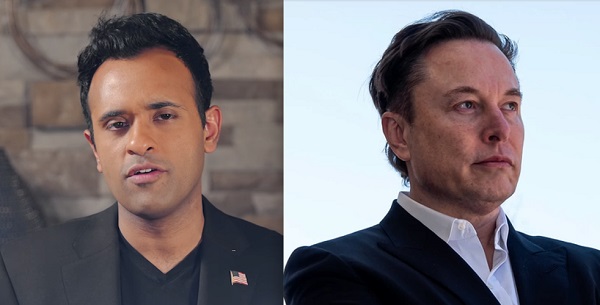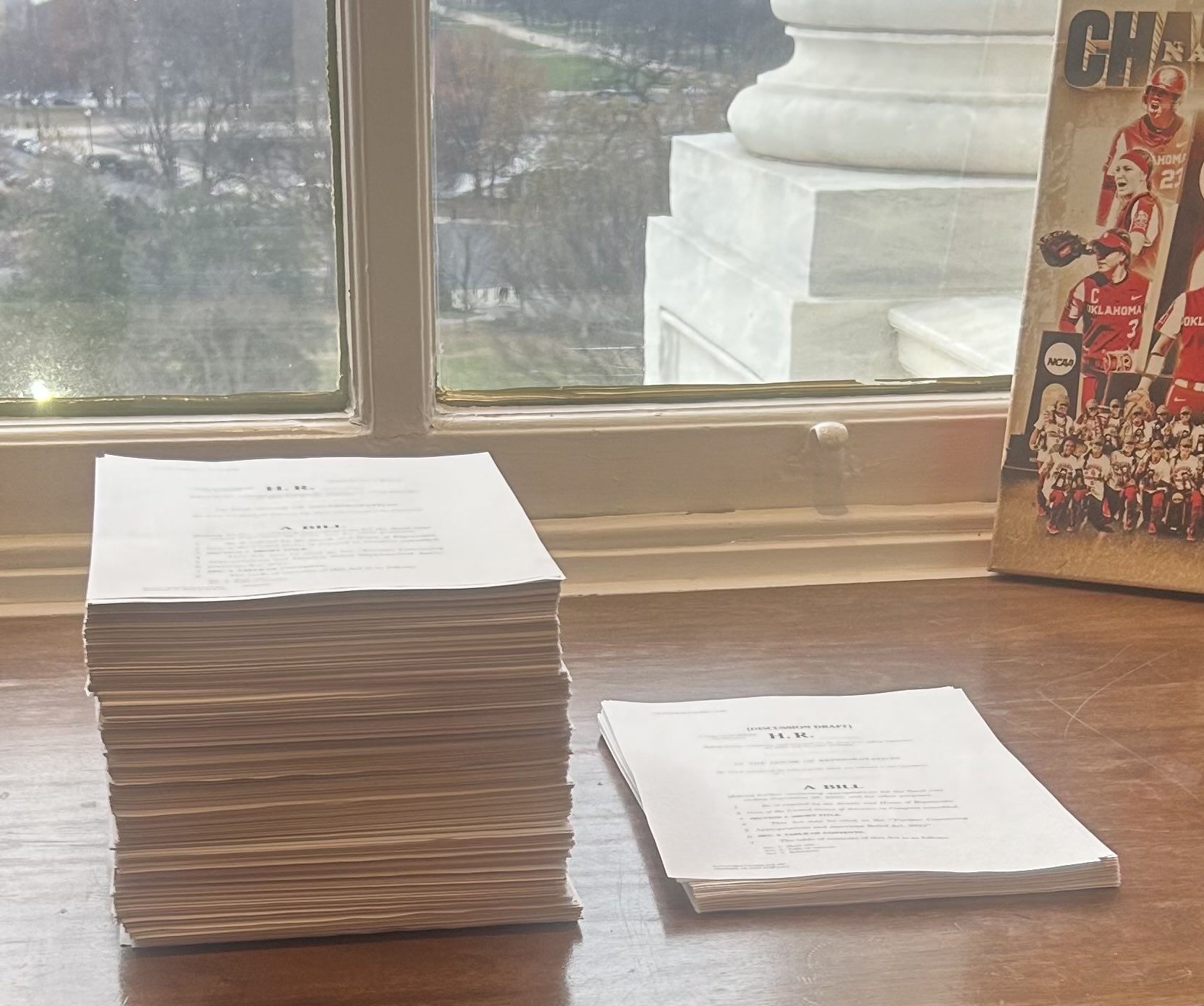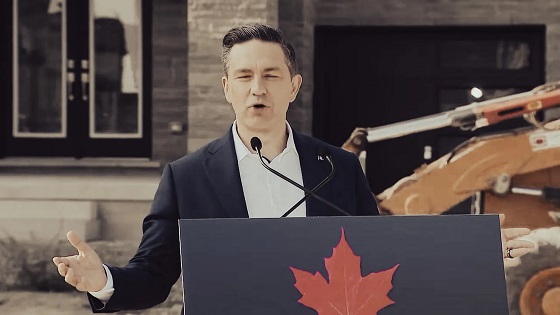Business
DOGE already on the job: How Elon Musk and Vivek Ramaswamy caused the looming government shutdown

Legislators had 24 hours to read through 1,547 pages. Ramaswamy read them. Musk presented an alternative. The process collapsed.
Elon Musk and Vivek Ramaswamy are flexing their muscles even before President Elect Donald Trump’s inauguration, spiking a bipartisan spending bill. The bill was introduced on Tuesday with voting scheduled for Wednesday. Legislators were under massive pressure to approve of the spending bill or risk a government shut down. Problem is, the bill was over 1,500 pages long!
Chances are, the bill would have passed and in the ensuing weeks as details became known the public would have been outraged by all the extra plans to spend / waste taxpayer dollars. Legislators would have apologized by saying they simply had no time to read everything and they were desperate to avoid a shut down.
That’s where the new DOGE comes in. First Ramaswamy somehow read the bill and posted a video to TikTok and X to inform voters what they were going to be paying for in this new bill.
@vivekramaswamy Congress wants to waste your money without telling you, make sure that doesn’t happen
From MXMNews
The newly formed Department of Government Efficiency (DOGE), led by Elon Musk and Vivek Ramaswamy, successfully campaigned to halt the bipartisan continuing resolution (CR) in Congress. Musk and Ramaswamy took to X, rallying conservatives against the 1,547-page stopgap funding measure they argue is riddled with wasteful spending and unnecessary policy provisions.
Musk, a billionaire entrepreneur and vocal advocate for government reform, characterized the bill as a “pork-barrel” monstrosity. “Unless @DOGE ends the careers of deceitful, pork-barrel politicians, the waste and corruption will never stop,” Musk posted on X, adding that lawmakers who support the bill should be “voted out in two years.”
Meanwhile, Ramaswamy, a former Republican presidential candidate and DOGE co-chair, proposed an alternative to the bulky spending bill. Sharing a draft of his one-page resolution, he described it as a minimalist approach that avoids exacerbating historical spending excesses. “This is what a clean CR looks like,” he wrote, emphasizing the need for fiscal restraint.
Musk and Ramaswamy posted this to X.
Shorter = better. This bill is only 116 pages, instead of 1,500+ pages. Took a LOT less time to read. Glad to see the following garbage from yesterday’s bill removed in the current version: – Congressional pay raise/health benefits – 17 miscellaneous commerce bills – Random new pandemic policies, like funding for “biocontainment research laboratories” – Renewal of the “Global Engagement Center,” a key player in the federal censorship state
In record time, the public was informed, politicians were influenced by outraged taxpayers, and politicians blamed each other for a faulty bill and were forced to go back to the drawing board.
It’s all explained very well in this video presentation from Kaizen Asiedu, a Harvard graduate in philosophy who makes videos informing Americans about complicated political matters.
Friday’s deadline to avoid a government shutdown looms. Musk posted on X that a shutdown would be “infinitely better than passing a horrible bill.” His DOGE partner Vivek Ramaswamy urged Americans to contact their representatives to “stop the steal of your tax dollars.”
And President-elect Donald Trump posted this: “If Democrats threaten to shut down the government unless we give them everything they want, then CALL THEIR BLUFF,”.
Should the spending bill fail, it will mark a significant victory for DOGE and a potential turning point in efforts to reform Washington’s spending habits.
Business
It’s time to finally free the beer

This article supplied by Troy Media.
 By Samantha Dagres and Alessia Iafano
By Samantha Dagres and Alessia Iafano
Canada’s booze trade is a protectionist mess.
Have you ever stopped to wonder who decides what beers you’re allowed to buy? Probably not. But every time you wander into a beer store you’re browsing a lineup handpicked not just by brewers, but by bureaucrats. Your choices are less about your taste and more about politics.
Sure, you’ll find Ontario staples like Mill Street. But if you’ve got a taste for an award-winning B.C. wine, a Quebec microbrew or a small-batch rye from Saskatchewan, prepare for disappointment. Welcome to the great Canadian alcohol paradox: it’s easier to buy French wine than a bottle of craft gin from the next province over.
This absurdity gave rise to the “free the beer” movement: an effort to let Canadian alcohol flow across provincial borders like, well, an actual country. The issue hit the headlines a few years back when Gérard Comeau of New Brunswick had the gall to go on a beer run to Quebec. Instead of paying a nearly $300 fine for that cross-border booze crime, he lawyered up and took the fight to the Supreme Court. Spoiler alert: he lost. The court ruled that there’s no constitutional right to free trade within Canada. Yes, you read that correctly.
Still, Comeau’s case lit a fire under the debate. Losing the battle doesn’t always mean losing the war. Since then, there’s been modest movement toward sanity. Ottawa even announced it wanted to liberalize domestic alcohol trade earlier this year. One problem: it can’t. Canada’s Constitution gives provinces—not the federal government—control over alcohol sales. And many provinces are still clinging to their liquor fiefdoms.
To be fair, a few have started to uncork their markets. Manitoba lets you order from out-of province businesses. B.C., Alberta, Saskatchewan and Nova Scotia have partially openmarkets. The rest—including Ontario—are still stuck in prohibition-era thinking.
Want to know how much Ontario’s LCBO monopoly costs you? Check your next receipt. Then subtract about one-third of the pre-tax price: that’s the LCBO’s average markup. While grocery stores survive on razor-thin margins, the government liquor store is pouring itself a nice fat profit at your expense. But it’s not just your wallet that suffers. That monopoly also limits your choices. In Ontario it’s easier to get wine from Spain than from Quebec. Welcome to Canada.
Yes, there’s been some progress. Ontario has cracked open the door to reform with recent steps to expand direct-to-consumer sales. And now, it’s making noise about taking the lead on building a national framework that would finally let Canadians buy booze from across provincial borders without jumping through flaming hoops.
Earlier this year, Ontario signed memoranda of understanding with B.C., Alberta, Manitoba, Saskatchewan, New Brunswick, P.E.I. and Nova Scotia—agreements aimed at reducing trade barriers and building bilateral deals. Several other provinces have done the same.
The goal? A pan-Canadian framework to allow direct-to-consumer alcohol sales, where producers can ship across the country and consumers can buy what they actually want.
As of 2024, the domestic alcohol market was worth $15.5 billion for Canadian-made products—or $26.2 billion when you include imports. It’s not just common sense—it’s good economics. Smaller producers in particular stand to gain. In fact, 76 per cent of Canadian wineries say direct-to-consumer sales would increase their revenue in the next year.
And for consumers? Better access, better variety and—brace yourself—possibly lower prices.
The first framework agreement was promised with Manitoba by the end of June. That deadline has come and gone Still, for those who’ve been fighting to pry Canada’s alcohol trade from the grip of protectionism and provincial monopolies, the finish line is at least on the horizon. If Premier Doug Ford wants to live up to his “open for business” motto, now’s the time. Honour the commitments. Finish the job. Then maybe—just maybe—Canadians will finally be able to toast with a beer from another province without breaking the law.
Samantha Dagres is the communications manager and Alessia Iafano is a research intern at the Montreal Economic Institute, a think tank with offices in Montreal, Ottawa and Calgary.
Troy Media empowers Canadian community news outlets by providing independent, insightful analysis and commentary. Our mission is to support local media in helping Canadians stay informed and engaged by delivering reliable content that strengthens community connections and deepens understanding across the country.
Business
Upcoming federal budget likely to increase—not reduce—policy uncertainty

From the Fraser Institute
By Tegan Hill and Grady Munro
The government is opening the door to cronyism, favouritism and potentially outright corruption
In the midst of budget consultations, the Carney government hopes its upcoming fall budget will provide “certainty” to investors. While Canada desperately needs to attract more investment, the government’s plan thus far may actually make Canada less attractive to investors.
Canada faces serious economic challenges. In recent years, the economy (measured on an inflation-adjusted per-person basis) has grown at its slowest rate since the Great Depression. And living standards have hardly improved over the last decade.
At the heart of this economic stagnation is a collapse in business investment, which is necessary to equip Canadian workers with the tools and technology to produce more and provide higher quality goods and services. Indeed, from 2014 to 2022, inflation-adjusted business investment (excluding residential construction) per worker in Canada declined (on average) by 2.3 per cent annually. For perspective, business investment per worker increased (on average) by 2.8 per cent annually from 2000 to 2014.
While there are many factors that contribute to this decline, uncertainty around government policy and regulation is certainly one. For example, investors surveyed in both the mining and energy sectors consistently highlight policy and regulatory uncertainty as a key factor that deters investment. And investors indicate that uncertainty on regulations is higher in Canadian provinces than in U.S. states, which can lead to future declines in economic growth and employment. Given this, the Carney government is right to try and provide greater certainty for investors.
But the upcoming federal budget will likely do the exact opposite.
According to Liberal MPs involved in the budget consultation process, the budget will expand on themes laid out in the recently-passed Building Canada Act (a.k.a. Bill C-5), while also putting new rules into place that signal where the government wants investment to be focused.
This is the wrong approach. Bill C-5 is intended to help improve regulatory certainty by speeding up the approval process for projects that cabinet deems to be in the “national interest” while also allowing cabinet to override existing laws, regulations and guidelines to facilitate such projects. In other words, the legislation gives cabinet the power to pick winners and losers based on vague criteria and priorities rather than reducing the regulatory burden for all businesses.
Put simply, the government is opening the door to cronyism, favouritism and potentially outright corruption. This won’t improve certainty; it will instead introduce further ambiguity into the system and make Canada even less attractive to investment.
In addition to the regulatory side, the budget will likely deter investment by projecting massive deficits in the coming years and adding considerably to federal debt. In fact, based on the government’s election platform, the government planned to run deficits totalling $224.8 billion over the next four years—and that’s before the government pledged tens of billions more in additional defence spending.
A growing debt burden can deter investment in two ways. First, when governments run deficits they increase demand for borrowing by competing with the private sector for resources. This can raise interest rates for the government and private sector alike, which lowers the amount of private investment into the economy. Second, a rising debt burden raises the risk that governments will need to increase taxes in the future to pay off debt or finance their growing interest payments. The threat of higher taxes, which would reduce returns on investment, can deter businesses from investing in Canada today.
Much is riding on the Carney government’s upcoming budget, which will set the tone for federal policy over the coming years. To attract greater investment and help address Canada’s economic challenges, the government should provide greater certainty for businesses. That means reining in spending, massive deficits and reducing the regulatory burden for all businesses—not more of the same.
-

 Crime2 days ago
Crime2 days agoFormer NYPD Inspector Shares What Family Of Alleged Charlie Kirk Assassin Feared Before Turning Him In
-

 Daily Caller2 days ago
Daily Caller2 days ago‘You Have No Idea What You Have Unleashed’: Erika Kirk Addresses Supporters For First Time Since Kirk’s Assassination
-

 espionage1 day ago
espionage1 day agoInside Xi’s Fifth Column: How Beijing Uses Gangsters to Wage Political Warfare in Taiwan — and the West
-

 Censorship Industrial Complex1 day ago
Censorship Industrial Complex1 day agoDecision expected soon in case that challenges Alberta’s “safe spaces” law
-

 Education2 days ago
Education2 days agoOur kids are struggling to read. Phonics is the easy fix
-

 International1 day ago
International1 day agoBrazil sentences former President Bolsonaro to 27 years behind bars
-

 Energy20 hours ago
Energy20 hours agoThe IEA’s Peak Oil Fever Dream Looks To Be In Full Collapse
-

 Crime20 hours ago
Crime20 hours agoTransgender Roomate of Alleged Charlie Kirk Assassin Cooperating with Investigation






